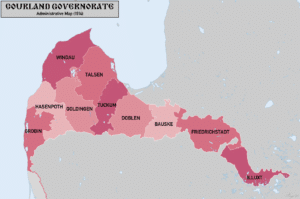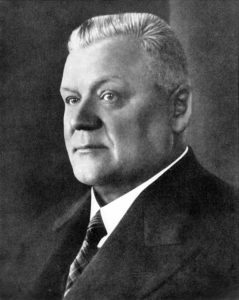
In the 17th and early 18th centuries, the Polish–Lithuanian Commonwealth, Sweden, and Russia struggled for supremacy in the eastern Baltic. After the Polish–Swedish War, northern Livonia (including Vidzeme) came under Swedish rule. Riga became the capital of Swedish Livonia and the largest city in the entire Swedish Empire. Fighting continued sporadically between Sweden and Poland until the Truce of Altmark in 1629. In Latvia, the Swedish period is generally remembered as positive; serfdom was eased, a network of schools was established for the peasantry, and the power of the regional barons was diminished.

Several important cultural changes occurred during this time. Under Swedish and largely German rule, western Latvia adopted Lutheranism as its main religion. The ancient tribes of the Couronians, Semigallians, Selonians, Livs, and northern Latgallians assimilated to form the Latvian people, speaking one Latvian language. Throughout all the centuries, however, an actual Latvian state had not been established, so the borders and definitions of who exactly fell within that group are largely subjective. Meanwhile, largely isolated from the rest of Latvia, southern Latgallians adopted Catholicism under Polish/Jesuit influence. The native dialect remained distinct, although it acquired many Polish and Russian loanwords.
Latvia in the Russian Empire (1795–1917):
The capitulation of Estonia and Livonia in 1710 and the Treaty of Nystad, ending the Great Northern War in 1721, gave Vidzeme to Russia (it became part of the Riga Governorate). The Latgale region remained part of the Polish–Lithuanian Commonwealth as Inflanty Voivodeship until 1772, when it was incorporated into Russia. The Duchy of Courland and Semigallia became an autonomous Russian province (the Courland Governorate) in 1795, bringing all of what is now Latvia into the Russian Empire. All three Baltic provinces preserved local laws, German as the local official language and their own parliament, the Landtag.

During these two centuries Latvia experienced economic and construction boom – ports were expanded (Riga became the largest port in the Russian Empire), railways built; new factories, banks, and a University were established; many residential, public (theatres and museums), and school buildings were erected; new parks formed; and so on. Riga’s boulevards and some streets outside the Old Town date from this period.
Declaration of Independence:
World War I devastated the territory of what became the state of Latvia, and other western parts of the Russian Empire. Demands for self-determination were initially confined to autonomy, until a power vacuum was created by the Russian Revolution in 1917, followed by the Treaty of Brest-Litovsk between Russia and Germany in March 1918, then the Allied armistice with Germany on 11 November 1918. On 18 November 1918, in Riga, the People’s Council of Latvia proclaimed the independence of the new country, with Kārlis Ulmanis becoming the head of the provisional government. The General representative of Germany August Winnig formally handed over political power to the Latvian Provisional Government on 26 November.

